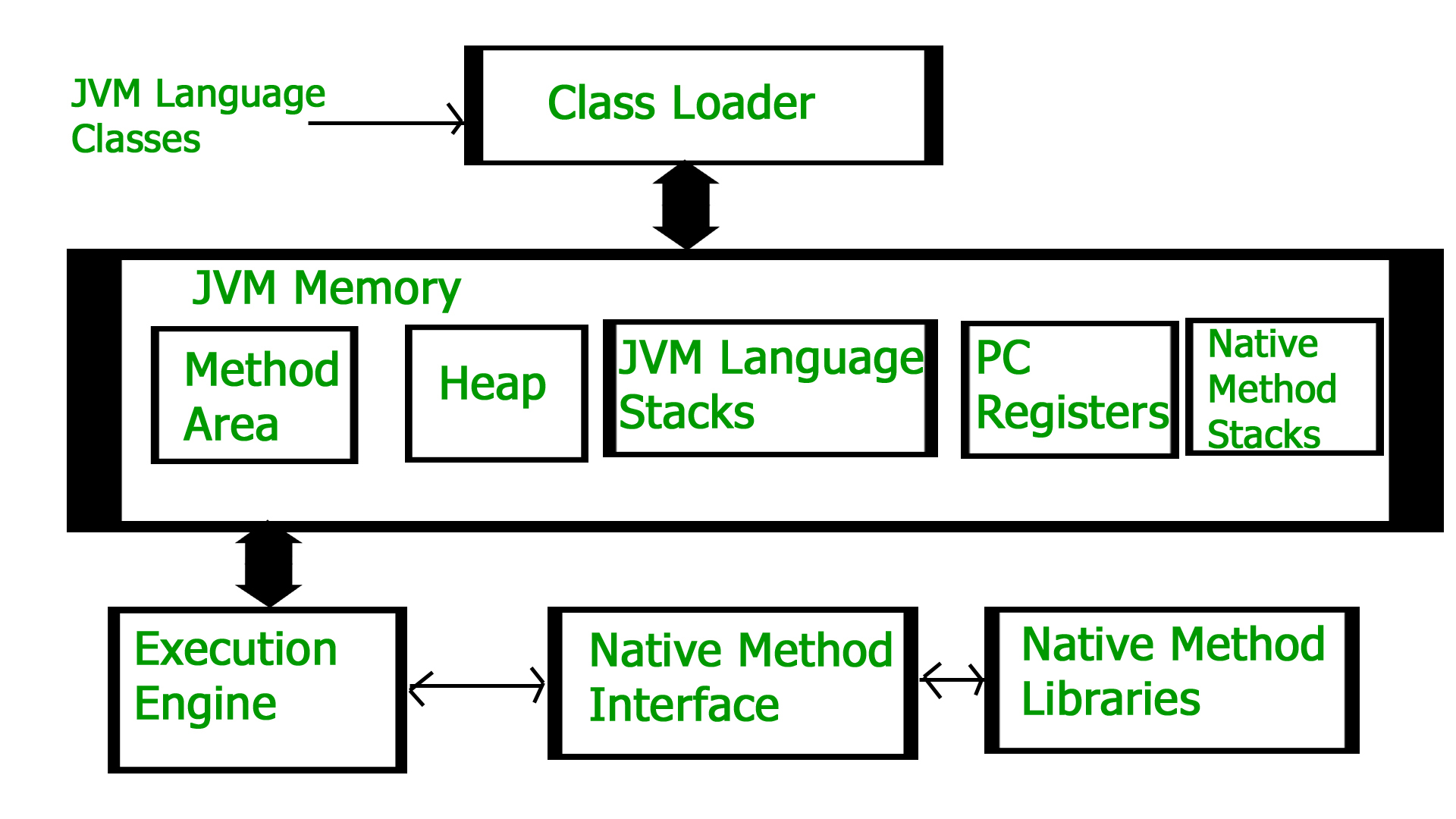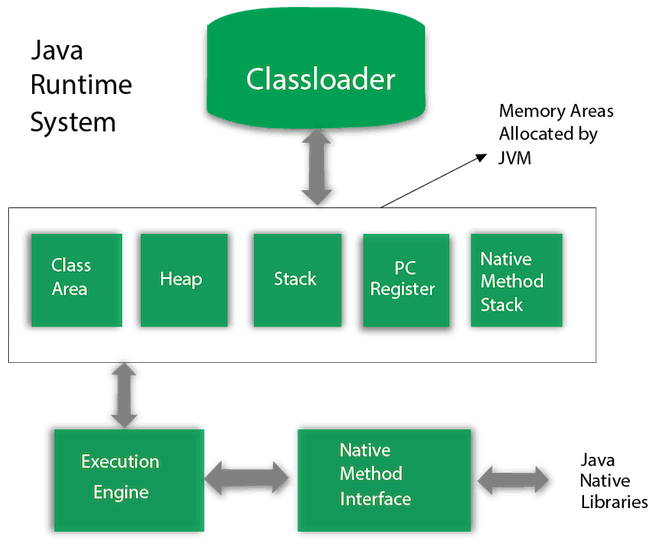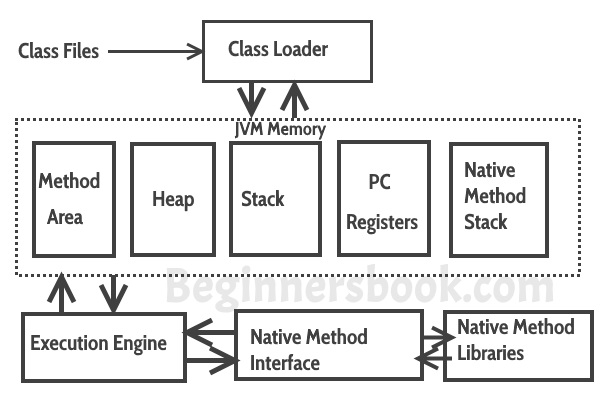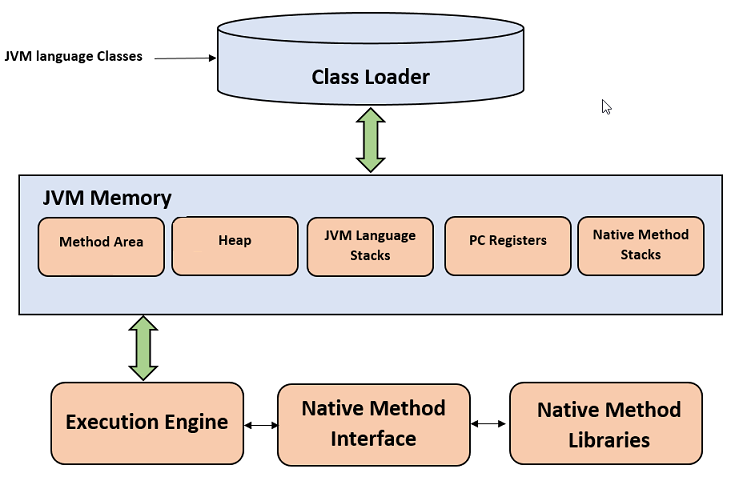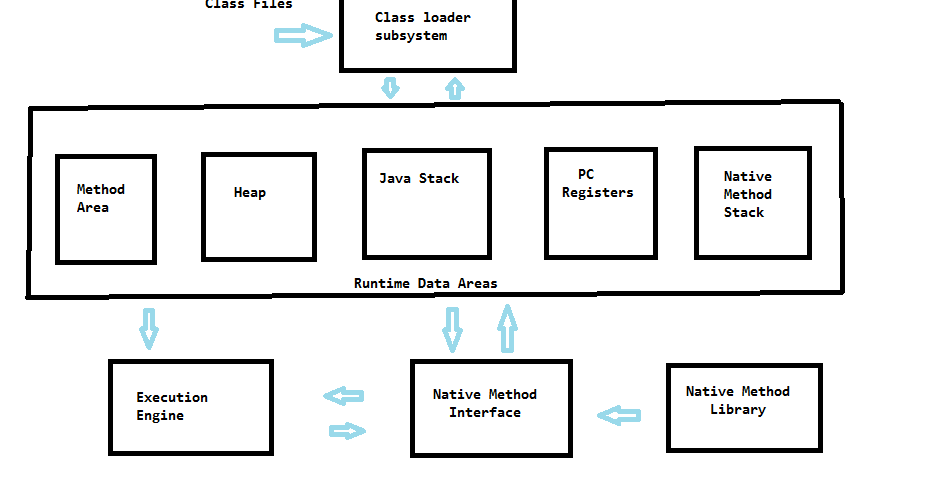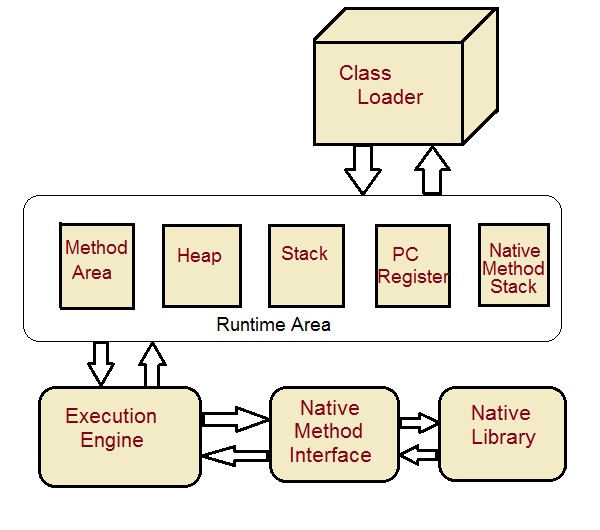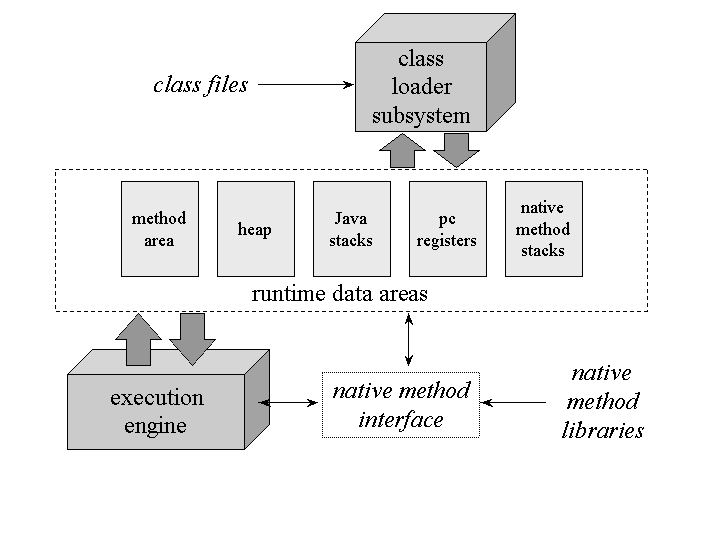Jvm Architecture In Java

Heap area is also.
Jvm architecture in java. Below is a diagram of the architecture of the jvm. The compiler compiles the java file into a java class file then that class file is input into the jvm which loads and executes the class file. Java jvm architecture. Classloader is a subsystem of jvm which is used to load class files.
The user can specify what version to use by using d32 or d64 in the vm arguments. It converts java bytecode into machines language. Jvms are available for number of hardware and software platforms and. Method area is one per jvm and it.
2 class method area. In other programming languages the compiler produces machine code for a particular system. Heap area all the objects and its corresponding instance variables and arrays will be stored here. Class method area stores per class structures such as the runtime constant pool field and.
The jvm java virtual machine is an abstract machine. The jvm comes in 32b and 64b versions. This is a specification that provides a runtime environment that can execute the java bytecode. However java compiler produces code for a virtual machine known as java virtual machine.
Stack area for every thread a. The server jvm has been designed for long running java applications on servers. Whenever we run the java program. It is the runtime data area in.
The 32b version could only address up to 4g of memory. It is platform dependent. Jvm architecture 1 classloader.
